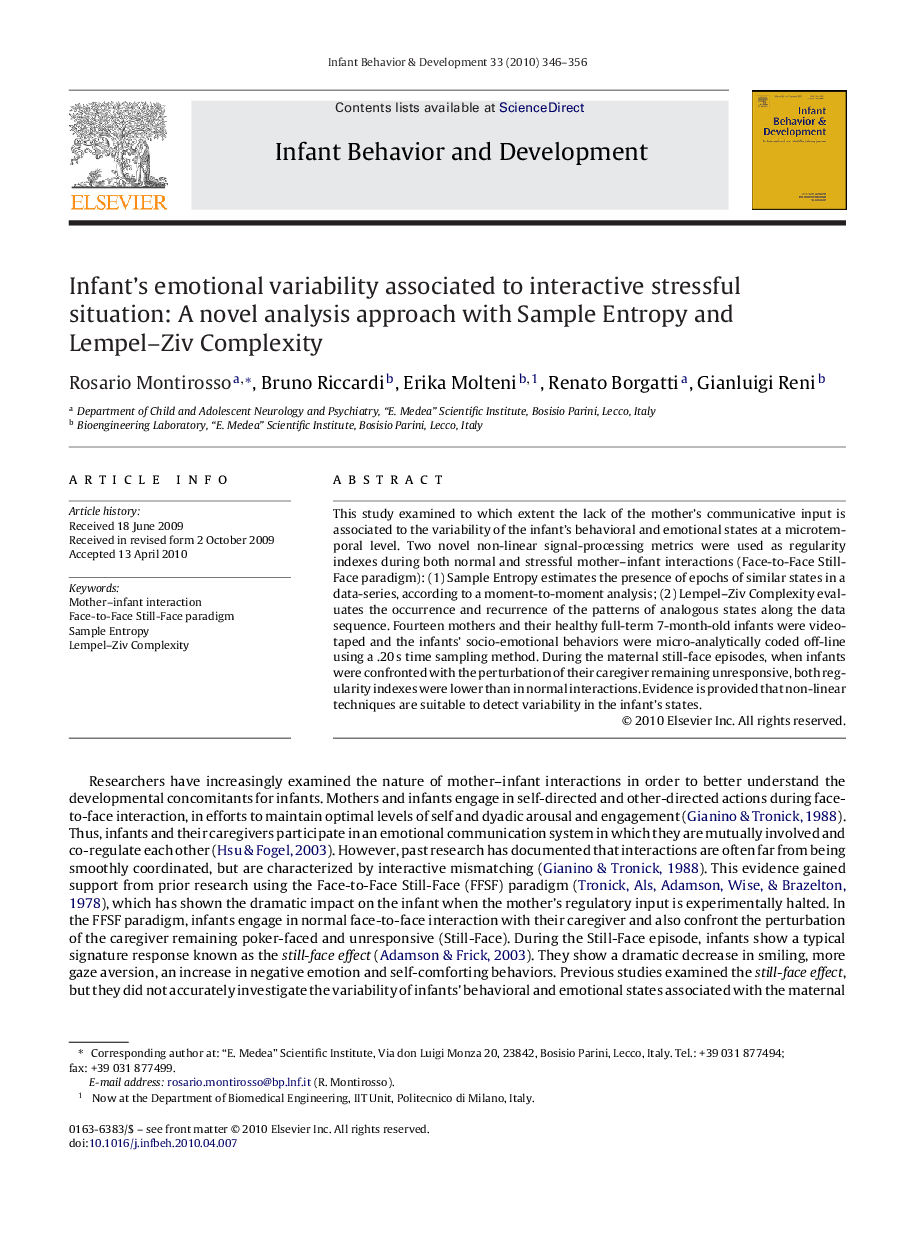| Article ID | Journal | Published Year | Pages | File Type |
|---|---|---|---|---|
| 10452775 | Infant Behavior and Development | 2010 | 11 Pages |
Abstract
This study examined to which extent the lack of the mother's communicative input is associated to the variability of the infant's behavioral and emotional states at a microtemporal level. Two novel non-linear signal-processing metrics were used as regularity indexes during both normal and stressful mother-infant interactions (Face-to-Face Still-Face paradigm): (1) Sample Entropy estimates the presence of epochs of similar states in a data-series, according to a moment-to-moment analysis; (2) Lempel-Ziv Complexity evaluates the occurrence and recurrence of the patterns of analogous states along the data sequence. Fourteen mothers and their healthy full-term 7-month-old infants were videotaped and the infants' socio-emotional behaviors were micro-analytically coded off-line using a .20Â s time sampling method. During the maternal still-face episodes, when infants were confronted with the perturbation of their caregiver remaining unresponsive, both regularity indexes were lower than in normal interactions. Evidence is provided that non-linear techniques are suitable to detect variability in the infant's states.
Related Topics
Life Sciences
Neuroscience
Behavioral Neuroscience
Authors
Rosario Montirosso, Bruno Riccardi, Erika Molteni, Renato Borgatti, Gianluigi Reni,
